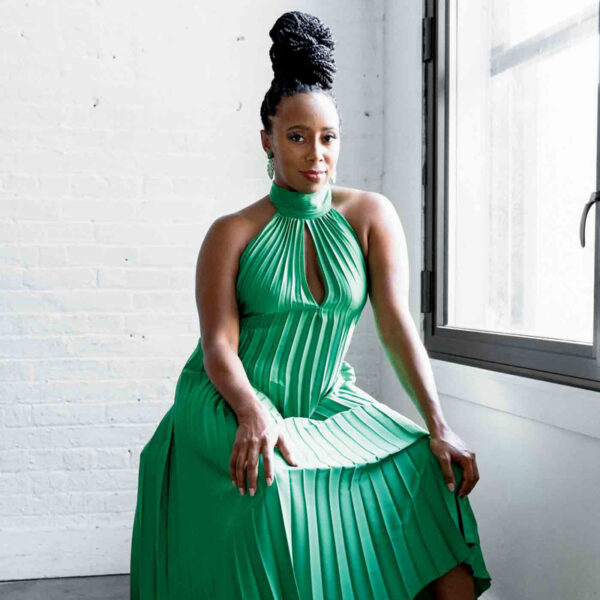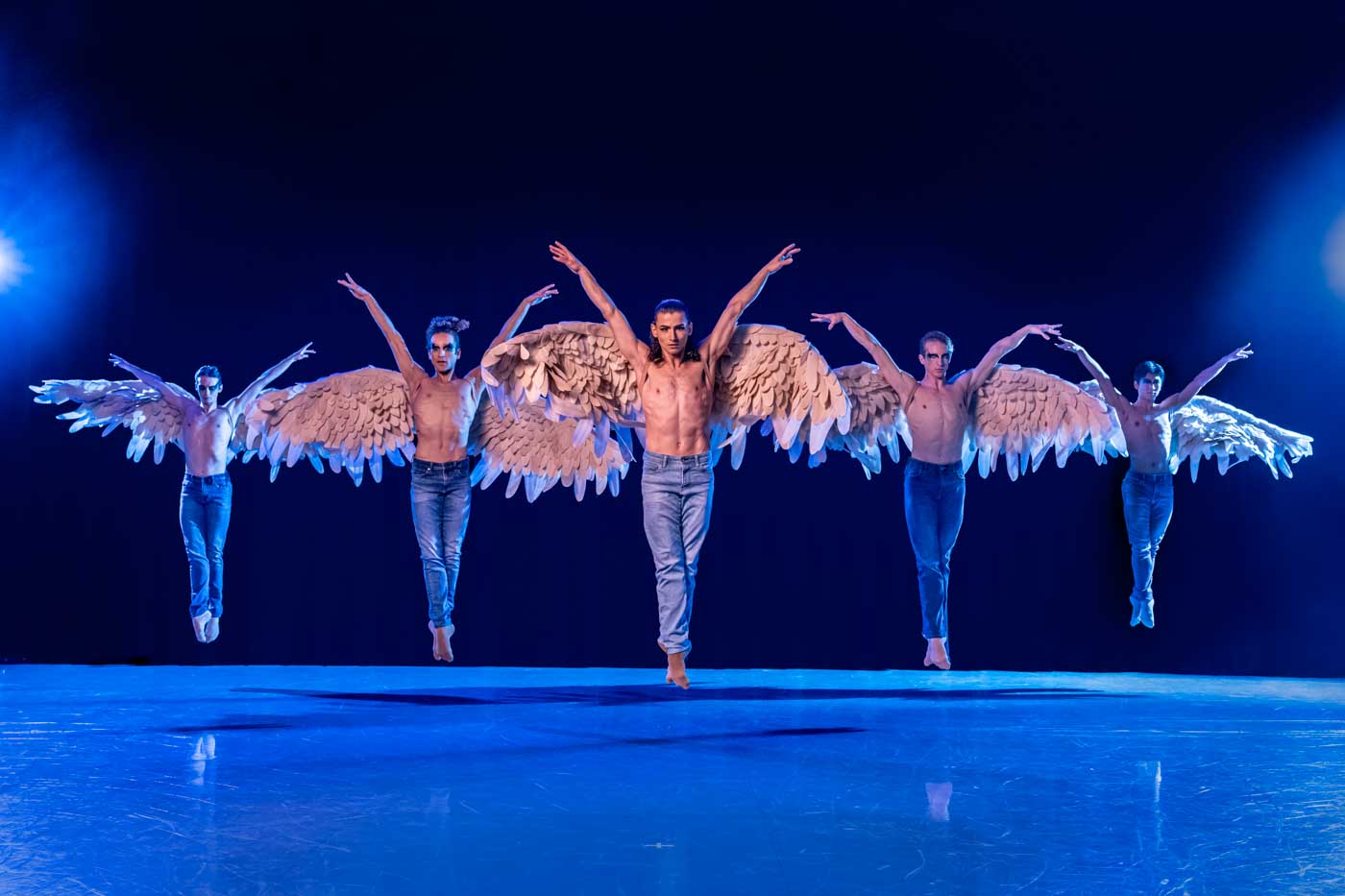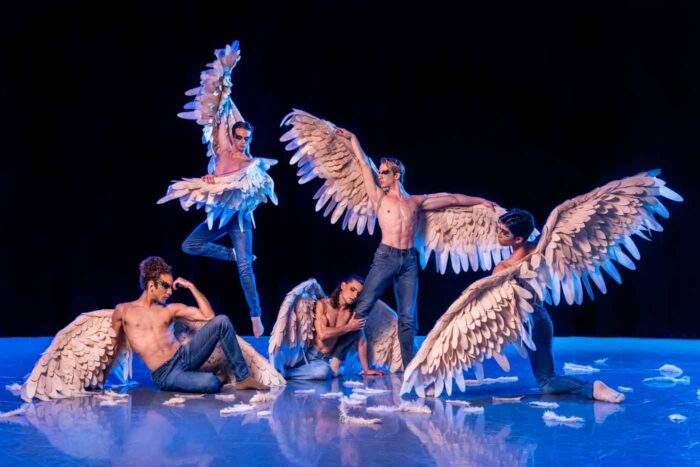BOLD MOVES
By Thomas Connors
PORTRAIT PHOTOGRAPHY BY REBECCA MARCELA OVIATT
DaSilva
By Thomas Connors
PORTRAIT PHOTOGRAPHY BY REBECCA MARCELA OVIATT
DaSilva


“When I was a teenager, in order to see dance, you had to go to the theater,” recalls choreographer Chanel DaSilva. “Or go to the Public Library for the Performing Arts in Lincoln Center and pop in a VHS tape. Young people today can just type in a few words on their smartphone and find anything they want immediately, which takes away from the understanding that this craft, this art form, takes time, patience, commitment, and discipline to master.”
That said, the New York-based DaSilva is no Luddite. During the pandemic, she saw her first piece for the Joffrey Ballet premiere digitally. “It reached thousands and thousands of people across the country and the world that it would not have in the theater alone. My duty now is to continue to honor the discipline and rigor that it takes to be a professional dancer and choreographer that I learned from my teachers, and to also not become a dinosaur and lean into the possibilities of how dance is viewed and shared in the future.”
DaSilva, who has created works for several dance companies, including Parsons Dance, Ballet Memphis, and Dallas Black Dance Theatre, is debuting her third piece for the Joffrey, Wabash & You, at the Harris Theater for Music and Dance from November 6 to 9. “Set in downtown Chicago, the piece,” shares DaSilva, “is a modern twist on the classic girl-meets-boy story. It is a love letter to the city of Chicago and to the hopeless romantic that lives within us all.”

Dance has defined DaSilva’s life practically from the start. She began classes at age 3 in Queens, New York, “and 36 years later, I have never looked back.” She attended Juilliard, where the training consisted primarily of ballet and the modern dance techniques of Martha Graham, José Limón, Lester Horton, Merce Cunningham, and Paul Taylor. After earning her degree, DaSilva launched her performing career, first as a member of the Trey McIntyre Project, and later, with the Lar Lubovitch Dance Company. “Trey McIntyre is one of my favorite choreographers. Being able to dance in his work and be in the room as he created so many illustrious masterpieces taught me the delicate balance of how to be both literal and abstract at the same time in choreographic storytelling. My time dancing with Lar Lubovitch taught me how to use bodies in space as brushstrokes, to paint the canvas of the stage by following the energy and momentum.”
Grateful for the mentors who have helped her become the artist she is, and mindful of how difficult it is to fashion a life in the arts, DaSilva and partner and fellow dancer, Nigel Campbell, founded MOVE|NYC|, a civic arts and justice organization committed to advancing diversity and equity in the dance field and beyond. “It was born out of our lived experiences as Black and Brown dancers in the classical and contemporary dance fields,” explains DaSilva. “I am from East New York in Brooklyn, and for many reasons, I could have been one of the young pre-professional artists of color whose rise into the classical ballet and contemporary dance fields was thwarted due to social and financial barriers. Historically, the price tag for a young dancer to train rigorously in ballet and modern techniques is well beyond the means of the average family, with scholarships few and far between, especially for young Black and Brown women. Historically, college conservatories and training programs for dance, whose graduates go on to join these companies, are racially homogeneous. And thus, historically, we then have a classical and contemporary ballet field that has a very low percentage of Black and Brown dancers in the company and in leadership.”
Focusing on mentorship, professional development, and dance training for individuals aged 13–22, MOVE|NYC| aims to provide aspiring artists with the skills, opportunities, and platforms they need to succeed. “In just a decade,” observes DaSilva, “we’ve seen a visible shift in the racial demographics of institutions that were often out of reach for many young people of color.”
Like any self-aware artist, DaSilva knows that, successes aside, she is still growing herself. And she credits her experience at the Joffrey as key to her creative evolution. “I could truly go on for days about how my affiliation with this iconic institution has catapulted my choreographic career,” states DaSilva. “When I collaborate with the Joffrey Ballet on a new work, the ceiling for what I can imagine is removed. As a choreographer who is still establishing myself and who doesn’t want to become stagnant, that’s the best feeling! To know that I have that level of trust, support, and encouragement makes the art of creation feel boundless.”

For more information, visit Joffrey.org, harristheaterchicago.org, and movenyc.nyc.
Sign Up for the JWC Media Email